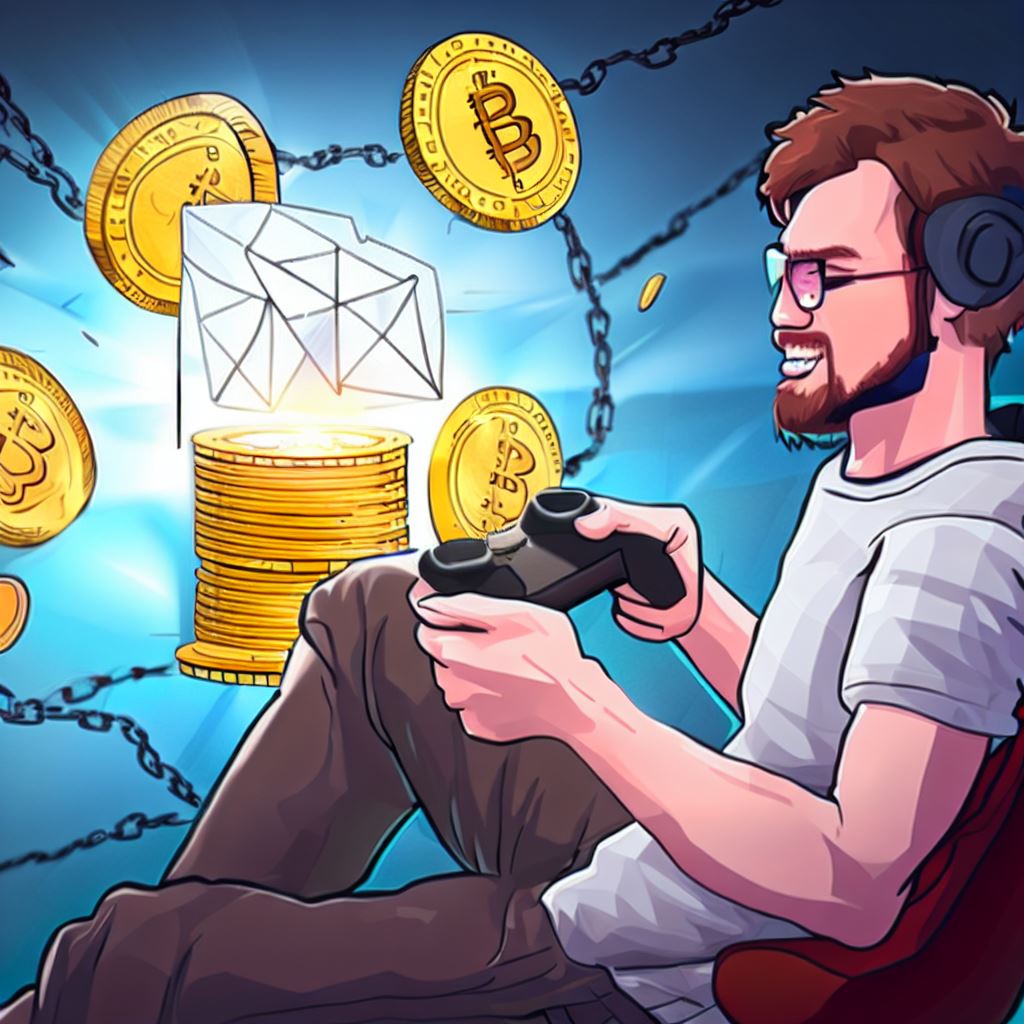In the digital age, the line between reality and virtuality is becoming increasingly blurred. Nowhere is this more evident than in the world of blockchain gaming. Imagine a world where your virtual achievements are rewarded with real-world value. This is the promise of play-to-earn games, a new genre of blockchain games that are transforming the gaming landscape.
The Emergence of Blockchain Games
Blockchain games are a revolutionary concept that combines gaming with blockchain technology. These games use blockchain to create, manage, and trade in-game assets. This means that every item, character, or piece of land you own in the game is truly yours and can be traded or sold at your discretion.
One of the first games to popularize this concept was CryptoKitties. In CryptoKitties, players can buy, breed, and sell virtual cats. Each cat is unique and stored on the Ethereum blockchain. Some rare cats have sold for over $100,000!
The Play-to-Earn Model
The play-to-earn model takes this concept a step further. In these games, players can earn real-world rewards through their in-game activities. These rewards can come in various forms such as cryptocurrencies or non-fungible tokens (NFTs).
For example, in Axie Infinity, players can earn Small Love Potions (SLPs) by winning battles. These SLPs can then be sold on a cryptocurrency exchange for real money.
The Power of NFTs
Non-fungible tokens (NFTs) are a type of digital asset that represent ownership of a unique item or piece of content. In the context of blockchain games, NFTs can represent in-game assets such as characters, items, or land.
The use of NFTs in gaming has several advantages. First, it allows for true ownership of in-game assets. Unlike traditional games where all assets are controlled by the game developer, in blockchain games, players have full control over their assets.
Second, NFTs enable a player-driven economy. Players can trade or sell their assets to other players, creating a dynamic market where assets have real-world value.
Finally, NFTs open up new possibilities for game design. Game developers can create unique gameplay mechanics around NFTs, such as breeding rare creatures or crafting unique items.
Crypto Rewards: A New Incentive
Crypto rewards are another key aspect of play-to-earn games. These rewards provide a tangible incentive for players to invest time and effort into the game.
In traditional games, progress is often rewarded with in-game currency or items. However, these rewards have no value outside of the game.
In contrast, crypto rewards have real-world value. Players can sell their rewards on a cryptocurrency exchange or use them to purchase other in-game assets. This provides an additional layer of motivation to play and excel in the game.

Gaming Innovation: The Future is Here
The integration of blockchain technology into gaming has opened up a world of possibilities. We are seeing innovative gameplay mechanics, player-driven economies, and true ownership of in-game assets.
Games like Decentraland allow players to own and trade virtual land, creating a thriving virtual real estate market. Meanwhile, Gods Unchained offers players the ability to own their in-game cards as NFTs, similar to physical trading cards.
Top 5 Play-to-Earn Games
Let’s delve deeper into the top 5 play-to-earn games that are making waves in the blockchain gaming industry:
- Gods Unchained: Gods Unchained is a free-to-play and play-to-earn blockchain trading card game that offers non-fungible token (NFT) cards with real-world value. Users compete, win, and collect cards which they can sell in the game’s marketplace. It’s a turn-based fantasy card game similar to Hearthstone and The Elder Scrolls: Legends.
- Tamadoge: Tamadoge combines NFT trading with virtual pets where users acquire tokens monitor their development and participate in battles with other players. The ecosystem of Tamadoge is known as ‘Tamaverse’, where players create buy breed care for and interact in every possible way with pets of the metaverse.
- The Sandbox: The Sandbox is a decentralized community-driven gaming ecosystem where creators can share and monetize voxel assets and gaming experiences on the Ethereum blockchain. It’s a virtual world where players can build, own, and monetize their gaming experiences and assets inside an immense virtual world.
- Splinterlands: Splinterlands is an online collectible card game using blockchain technology with cards that are owned as non-fungible tokens (NFTs). It’s a “play-to-win” crypto game where players can win real money in the game through tournaments ranked play and quests.
- Alien Worlds: Alien Worlds is a community-built metaverse where explorers can play and build together to collect NFTs and compete for Trilium. It’s a virtual world where players can build, own and monetize their gaming experiences on the Ethereum blockchain using $SAND the main utility token of the platform.
These games are not only revolutionizing the gaming industry but also providing players with an opportunity to earn real-world rewards through their in-game achievements. As technology continues to evolve, we can expect to see even more innovative developments in this space.
Conclusion
The world of gaming is undergoing a radical transformation thanks to blockchain technology. The play-to-earn model is just the beginning. As technology continues to evolve, we can expect to see even more innovative and exciting developments in this space.
So whether you’re a gamer looking to earn some extra cash or an investor interested in new opportunities, now is a great time to explore the world of blockchain gaming.
